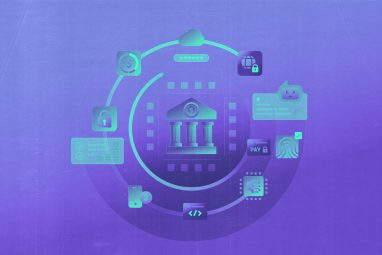India’s Digital Stack Makes it Ideal for Agentic AI, Zinnov CEO says
According to Pari Natarajan, CEO of Zinnov, agentic AI is poised to upend traditional hierarchies and shift the balance from command-and-control cultures to decentralized, empowered nodes within organizations.
Topics
News
- India’s First AI Unicorn Fractal Analytics Files for $560 Million IPO
- Infosys to Buy Majority Stake in Telstra Cloud Unit for $153 Million
- Goa Expands AI Cancer Screening, Launches Lifesaving Drug Pricing Policy
- HPE Announces NVIDIA-Powered AI Upgrades for Next-Gen Workloads
- Bengaluru Tech Summit Gets a Bigger Stage
- Graas.ai Secures $9 Million to Expand Agent Foundry in India

As artificial intelligence evolves from predictive insights to autonomous agents, it’s not just business processes that are being transformed but the very fabric of enterprise structures. According to Pari Natarajan, CEO of Zinnov, agentic AI is poised to upend traditional hierarchies and shift the balance from command-and-control cultures to decentralized, empowered nodes within organizations.
Natarajan explained, “Let’s play this out as a thought experiment. Take frontline roles, like a salesperson or an HR manager, when onboarding a new employee. Today, they spend a lot of time on manual, transactional tasks. But with AI automating those, the human professional is free to focus on what really matters: meaningful conversations, cultural alignment, and relationship building.”
In this future, the frontline, often seen as transactional, becomes a strategic layer. “The nodes of the organization become more intelligent. Instead of just handling transactions, they start creating value through insights and human connection. To fully leverage this, we’ll need to decentralize. Overly centralized organizations may struggle to adapt,” he said.
From Insight to Action
Natarajan outlined three major phases of the evolution of AI: insight, recommendation, and action.
“Initially, AI helped generate insights. Then came generative AI, which could create content. Now, agentic AI doesn’t just suggest, it acts. That’s a profound shift,” he noted.
He offered a simple analogy: “Let’s say I want to buy a shirt online. Earlier, I’d get AI-powered suggestions. Today, I can tell an agent, ‘Here’s my budget. Ffind and buy it for me.’ The agent handles the task end-to-end.”
This is the heart of agentic AI, it moves from advising humans to doing on their behalf. And yet, the Zinnov CEO quickly pointed out that this won’t lead to widespread job losses.
“Just like Amazon didn’t kill physical retail, agentic AI won’t wipe out jobs. It adds a new mode of interaction. For example, sometimes I’ll want an AI just to get something done. Other times, I’ll still want to browse through a mall,” he said.
Productivity, Not Replacement
Concerns about AI displacing coders or engineers are overstated, he insisted.
“Engineers spend only about 30% of their time writing code. Even if AI automates half of that, it’s still just a 15% shift in their total effort. AI will improve productivity, not replace people entirely.”
In fact, he sees AI adoption as a mostly organic transition.
“There’s no need for centralized, top-down reskilling programs. People have the tools, most of them free, on their phones. What we need is awareness and curiosity. This shift will happen like mobile adoption did. No one had to train people to move from desktops to smartphones. It just happened.”
For companies eager to embrace AI, Natarajan offered pragmatic advice: start by understanding your workflows.
“Especially in sales, do you know how your team spends its time? You need detailed visibility into tasks before automating them. Once that’s clear, the next step is change management.”
And where trust is involved, don’t expect AI to go it alone.
“In sensitive areas like healthcare, you’ll always need a human in the loop, or a heavily regulated system. An AI that makes diagnostic decisions must be FDA-approved, or it simply won’t be used,” he said.
India’s Dual Advantage
According to Natarajan, India is uniquely positioned to lead the next phase of the AI revolution—both at home and abroad.
“India has built a world-class digital public infrastructure—Aadhaar, UPI, the India Stack—that no other country has. This makes it possible to build AI agents for citizen services at scale,” he said.
India’s BPOs, technology firms, and GCCs manage thousands of workflows for multinational clients. “I spoke with a CEO who said they manage over 2,000 workflows. That’s gold when building agentic AI solutions. We might not lead in foundational models, but we are exceptionally well placed to integrate and scale AI solutions worldwide.”
Policy and the Path Ahead
The rise of agentic AI also calls for new thinking in policy and regulation.
“Some roles will disappear, and new ones will emerge. Organizations, and labor ecosystems, must be flexible enough to support that shift. If labor laws are too rigid, companies won’t be able to evolve,” he said.
And finally, regulation will be key. “We need clear guardrails and governance frameworks to ensure trust and safety. Policy innovation will be just as important as technological innovation.”
As agentic AI redefines how work gets done, Natarajan envisions a future that is not AI vs. humans, but AI with humans, augmenting capabilities and creating new possibilities.
“It’s about enabling people to grow alongside technology. And for those ready to embrace curiosity and change, the future is already here,” he said.



